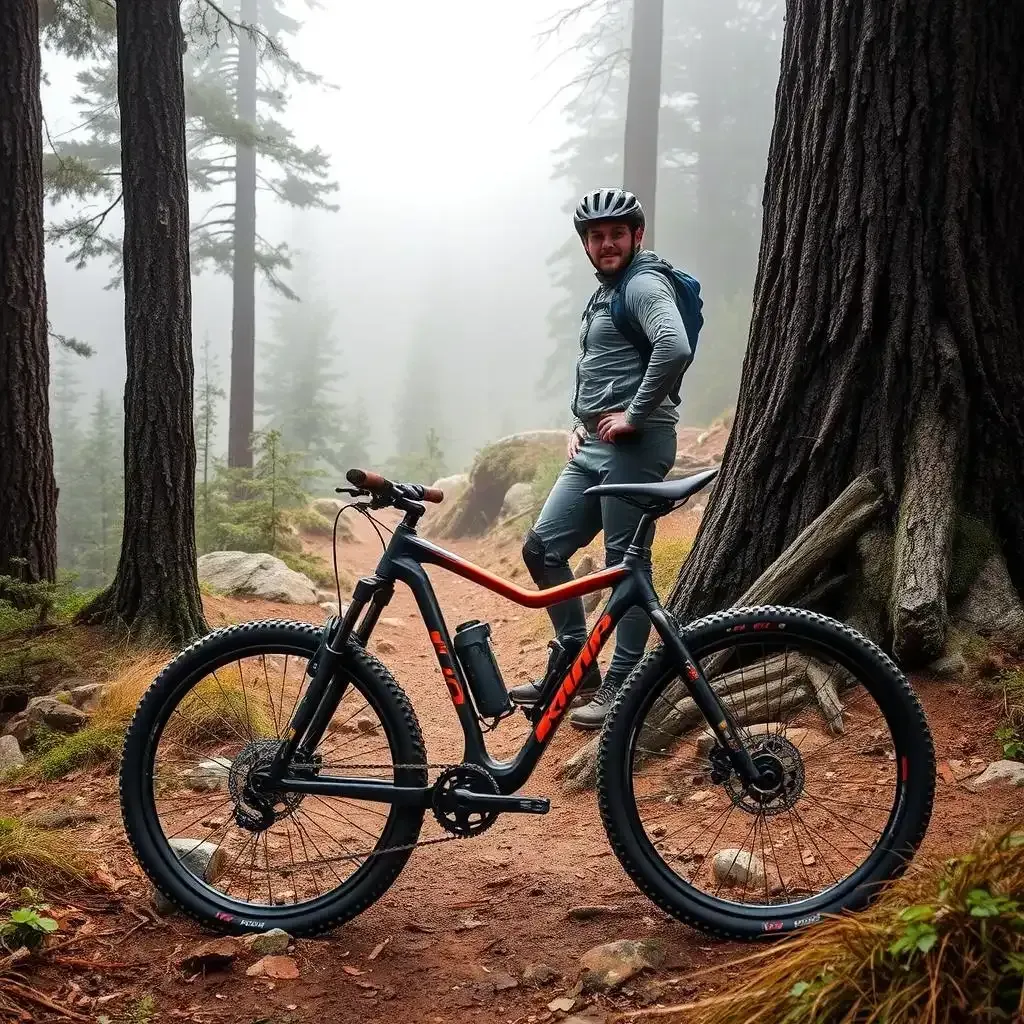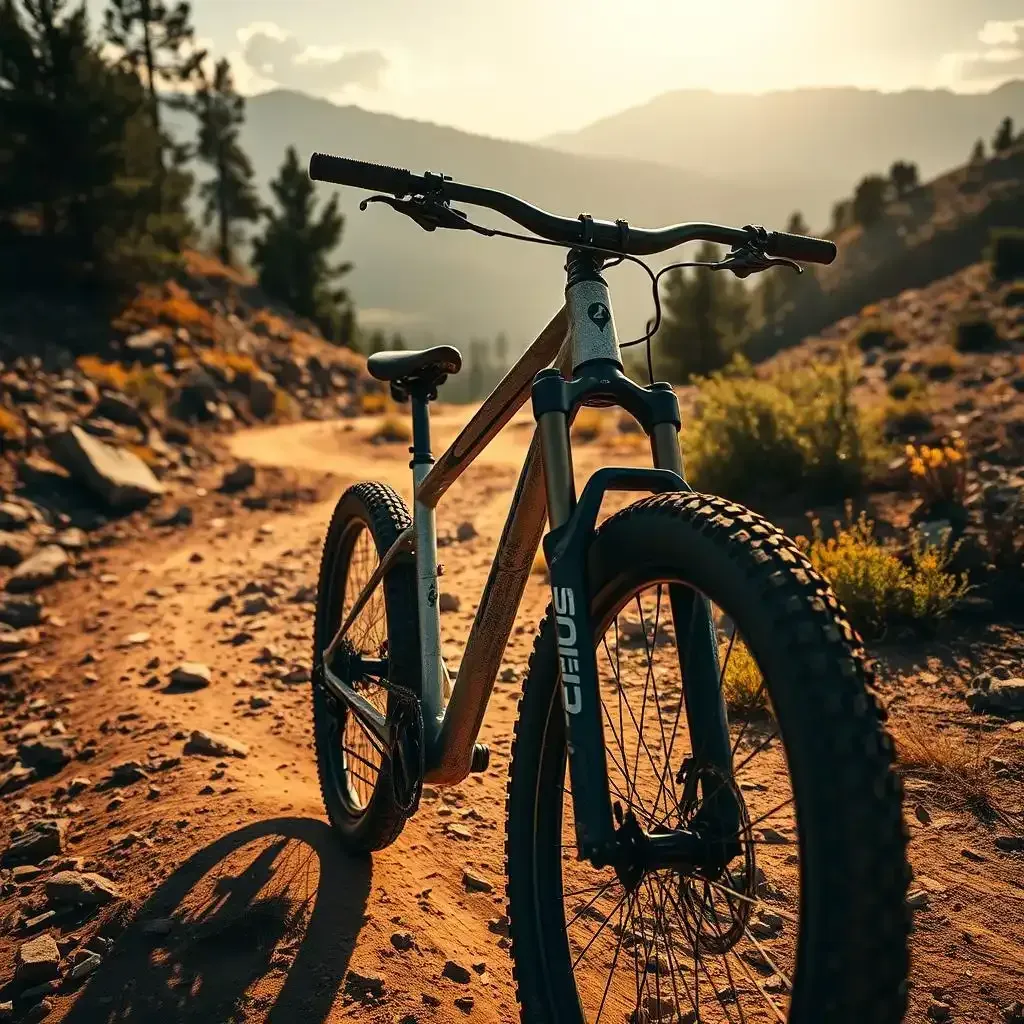Table of Contents
Welcome, fellow adventurers, to the world of Hard Tail mountain bikes! At yogapants.homes, we're passionate about helping you find the perfect bike for your needs. This comprehensive guide will explore the ins and outs of hard tail bikes, guiding you through the process of selecting the ideal model. Whether you're a seasoned pro or a curious beginner, understanding the nuances of hard tail bikes is key to unlocking a world of exhilarating off-road adventures. We'll explore into the features, benefits, and considerations when choosing a hard tail, comparing it to its full-suspension counterpart. By the end, you'll be equipped to confidently steer the world of hard tail mountain bikes and choose the perfect machine to conquer any trail.
Feature | Hard Tail | Full Suspension |
|---|---|---|
Suspension | Front only | Front and rear |
Weight | Lighter | Heavier |
Cost | Generally less expensive | Generally more expensive |
Maintenance | Less maintenance | More maintenance |
Riding Style | Cross-country, trail riding | All-mountain, downhill |

Let Loose Your Inner Badass: The Hard Tail Guide
Understanding Hard Tail Bikes: A Comprehensive Guide

Understanding Hard Tail Bikes A Comprehensive Guide
Hey there, fellow bike enthusiasts! Let's talk hard tails. I've been riding them for years, and they're my absolute favorite. Think of a hard tail mountain bike as a trusty steed – strong, reliable, and ready for experience. Unlike their full-suspension cousins (those with fancy shocks front and back), hard tails only have front suspension. This makes them lighter, simpler, and usually cheaper. They're like the nimble ninjas of the mountain biking world – quick, efficient, and surprisingly capable. I remember my first hard tail – a hand-me-down from my older brother. It wasn't fancy, but it taught me everything I know. It took me on countless trails, through mud, over rocks, and up hills I never thought possible.
One thing I love about hard tails is their simplicity. Fewer parts mean less to go wrong. Less maintenance equals more riding time! They're also super versatile. You can use them for cross-country rides, exploring trails, or even light downhill action. Think of them as the jack-of-all-trades of mountain bikes. They're not specialized for one thing, but they're good at a lot of things. Need a bike for various terrains? Check out our guide on yoga pants for tropical weather to see how adaptable clothing can be, just like a hard tail.
Bike Type | Suspension | Weight | Maintenance |
|---|---|---|---|
Hard Tail | Front only | Lighter | Easier |
Full Suspension | Front and Rear | Heavier | More complex |
Now, some folks might think hard tails are too basic, especially if they’re used to the plush ride of a full-suspension bike. But trust me, that's where the fun is! The direct association to the trail gives you more control and feedback. You feel every bump, every root, every rock. It’s exhilarating! It's like dancing with the terrain, instead of just floating over it. It's a more engaging experience, and you'll become a better rider because of it. Want to know more about choosing the right bike for your needs? Check out our helpful guide on yoga pants for retirees for more tips on choosing the right gear for your life stage.
A common question I get is: "Aren't hard tails too rough on your body?" And the answer is: It depends! It really depends on the quality of the bike, the terrain you're riding on, and how you ride. A well-built hard tail with good tires and components can handle quite a bit. It's important to choose a bike that fits you properly, and to start with easier trails before tackling anything too extreme. Also, remember to use your legs to absorb some of the impact. It's all about technique! And remember, this all ties into finding the right gear. Want some stylish options for your next exploration? Check out our selection of yoga pants with side pockets for practical and comfortable riding attire.
- Consider your riding style.
- Check the bike's components.
- Test ride before buying.
One important thing to remember is that a hard tail bike isn't just about the bike itself. It's about the whole experience. It's about the freedom of exploring new trails, the satisfaction of conquering a challenging climb, and the sheer joy of riding through stunning scenery. It's about pushing your limits and discovering what you're truly capable of. It's about connecting with nature and yourself, one pedal stroke at a time. To complete your journey preparation, take a look at our range of yoga pants for kids and get the entire family ready for a fun outdoor excursion.
Hard Tail Mountain Bikes: Choosing the Right One for You
So, you're thinking about getting a hard tail mountain bike? Awesome! They're like the Goldilocks of mountain bikes – not too hardcore, not too basic, just right for a whole lot of riding fun. I remember my first hard tail; it was a hand-me-down, a bit rusty, but it was *mine*. It took me on incredible adventures – muddy trails, rocky climbs, everything. It was a total blast. To get started, you need to think about what kind of riding you'll be doing. Are you mostly sticking to smooth trails, or are you hitting the gnarly stuff? Knowing this helps you figure out what kind of hard tail is best for you.
For example, if you're mostly cruising on relatively smooth paths, a hard tail with a lighter frame and simpler components might be perfect. It'll be easier to handle, and you won't need the super-heavy duty suspension of a downhill bike. But if you're tackling rocky terrain, you'll probably want something with sturdier components and maybe a slightly more aggressive geometry. Think of it like this: a nimble sports car versus a beefy off-road truck. Both are great, but they serve different purposes. Need some gear for your adventures? Check out our yoga pants for pear shapes for a comfortable fit.
Riding Style | Hard Tail Type | Key Features |
|---|---|---|
Smooth Trails | Cross-country | Lightweight, efficient |
Rocky Trails | Trail | Durable components, aggressive geometry |
Next, consider your budget. Hard tails can range in price from a few hundred dollars to well over a thousand. There are amazing entry-level hard tails that are perfect for beginners, and then there are high-end models packed with top-of-the-line components. Don't feel pressured to buy the most expensive bike right away; start with something that fits your skill level and budget. Then, as your skills improve, you can upgrade. It's like learning to ride a bike - start slow and build up your confidence. For a stylish choice, check out our yoga pants with a wide waistband for extra comfort.
Finally, and this is super important, go test ride some bikes! Don't just buy the first one you see. Spend some time at your local bike shop, talk to the staff, and get a feel for different models. You want a bike that fits you comfortably and feels good to ride. Don't forget to check the brakes, gears, and suspension – make sure everything is working smoothly. A comfy ride is important, so check out our non-see-through yoga pants for a comfortable and confident riding experience.
- Think about the kind of trails you'll ride.
- Set a realistic budget.
- Test ride several bikes before you decide.
Remember, finding the right hard tail is like finding the perfect pair of shoes—it needs to fit you perfectly. It's all about comfort, performance, and ultimately, having fun on the trail. Think of it as an extension of yourself, ready to tackle any experience. For more tips on choosing the right gear, look at our yoga pants with contouring for a flattering and supportive fit.
Hard Tail vs. Full Suspension: Making the Smart Choice
The Great Suspension Debate: Hardtail vs. Full Suspension
Okay, let's get down to the nitty-gritty: hardtails versus full-suspension mountain bikes. It's a big decision, kinda like choosing between pizza and ice cream – both are awesome, but totally different! Hardtails, as you know, only have a front suspension fork. Think of them as lean, mean, riding machines. They're lighter, simpler, and usually cheaper than full-suspension bikes. They're like the sprinters of the mountain biking world – efficient and fast on smooth trails. My first mountain bike was a hardtail, and it taught me SO much about control and bike handling. It was a hand-me-down, a bit rusty, but man, did it take me on some adventures!
Full-suspension bikes, on the other hand, have both front and rear suspension. These are the luxury sedans of the mountain biking world – plush, comfortable, and capable of handling rougher terrain. They soak up bumps like a dream, making for a smoother ride, especially on technical trails. They're great for tackling gnarly descents and longer rides where comfort is key. But they're heavier, more complex, and generally pricier. Choosing between them is like picking between a sleek sports car and a comfy SUV – both great for different purposes. Need some comfy gear for your rides? Check out our for ultimate comfort.
Feature | Hardtail | Full Suspension |
|---|---|---|
Suspension | Front only | Front and rear |
Weight | Lighter | Heavier |
Cost | Generally cheaper | Generally more expensive |
Maintenance | Less | More |
Riding Style: Finding Your Perfect Match
Your riding style is the biggest factor in this decision. Are you a cross-country whiz, zooming along smooth trails? A hardtail will be your best friend. Its lightweight design and efficient pedaling make it perfect for covering ground quickly. But if you love bombing down steep, rocky descents, a full-suspension bike will make your life – and your body – much happier. That rear suspension will soak up all those nasty bumps, saving your wrists, elbows, and backside from a serious beating. I remember one time I tried tackling a rocky downhill on my old hardtail...let's just say I learned my lesson! For some extra comfort and style, check out our .
Think about it like this: a hardtail is like a trusty workhorse, while a full-suspension bike is more like a high-performance sports car. Both have their strengths and weaknesses. A hardtail demands more from the rider, rewarding you with a more connected and engaging experience. A full-suspension bike softens the ride, allowing you to focus more on speed and less on absorbing shock. It all comes down to what kind of riding you enjoy most and what level of maintenance you're willing to undertake. For stylish and comfortable riding gear, check out our selection of .
- Consider your riding style: cross-country, trail, or downhill?
- Think about your budget: hardtails are generally more affordable.
- Maintenance: hardtails require less upkeep.
The Verdict: It's All About You!
Ultimately, there's no single "right" answer. The best mountain bike for you depends entirely on your personal preferences and riding style. Do you prioritize speed and efficiency, or comfort and shock absorption? Are you comfortable with more maintenance, or do you prefer a low-maintenance ride? Consider your budget and the types of trails you frequently ride. If you're unsure, rent or demo both types of bikes to get a feel for which one better suits your needs. And don't forget to check out our for a comfortable ride, no matter your age!
Honestly, I love both hardtails and full-suspension bikes for different reasons. Hardtails make me feel more connected to the trail, while full-suspension bikes let me conquer more challenging terrain. The key is to choose the bike that best fits your riding style and goals. Having the right bike can make all the difference in your enjoyment and safety on the trail. It’s all about the experience, and finding the perfect bike to take you there. Need something to keep your essentials close? Check out our for a practical and comfortable ride.
"The best bike is the one you ride the most." - Anonymous mountain biker
Final Thought
Choosing a hard tail mountain bike is a personal progression. Consider your riding style, budget, and the terrain you'll be tackling. Remember, the perfect hard tail is out there, waiting for you to learn it. Happy trails!
